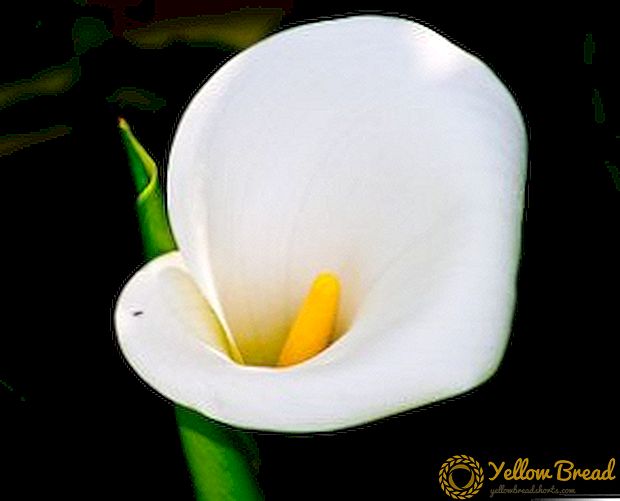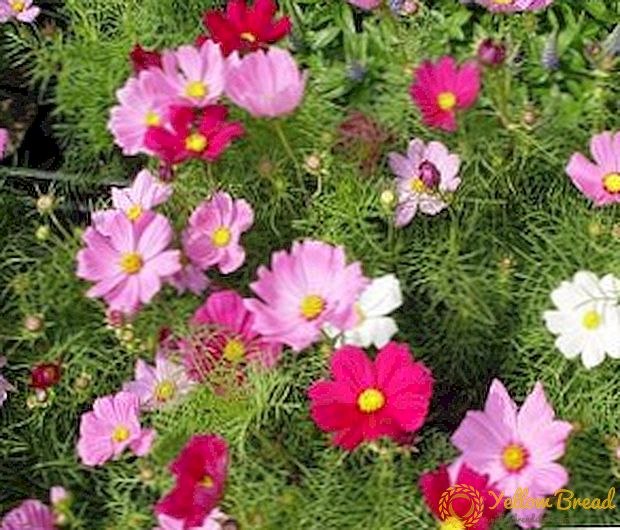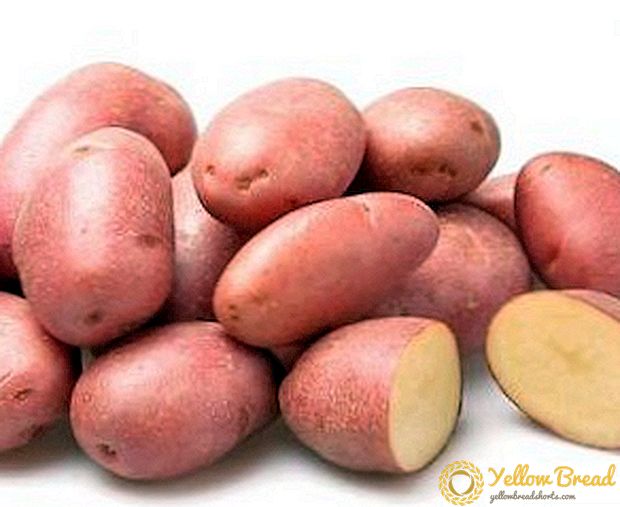 Variety of black currant "Yadrenaya" has been known for over 30 years. Bred by Altai gardeners, this variety immediately declared itself due to its high cold resistance, good yield and large size of berries (it was one of the first "giants" in the currant world).
Variety of black currant "Yadrenaya" has been known for over 30 years. Bred by Altai gardeners, this variety immediately declared itself due to its high cold resistance, good yield and large size of berries (it was one of the first "giants" in the currant world).
Currant "Yadrenaya" continues to be popular among gardeners. With proper care, this variety is not inferior, and in many ways surpasses the rest in almost all parameters.
- Characteristics of currants varieties "Vigorous"
- Pros and cons varieties
- Proper planting currant varieties "Yadrenaya"
- How to choose seedlings for planting
- When is it better to plant currant seedlings
- Selection and preparation of currant space
- Step by Step Currant Planting Process
- Competent care - a pledge of a rich harvest
- Soil mulching
- How to water
- What to feed
- Harvesting
- Skillful cropping
- Resistance to diseases and pests: the fight in case of defeat
Characteristics of currants varieties "Vigorous"
Currant "Yadrenaya" refers to skoroplodny varieties of the average term of ripening - the berries ripen by July 20-25.
Description of the variety:
- bush - average growth rate, medium sprouting, with rare shoots, average height - 1.5 m;
- shoots thick and medium (growing - straight and green, lignified - slightly pubescent and brown);
- leaves - Five-lobed (central lobe more elongated), green and shiny, medium-sized, leathery and wrinkled. The veins on the leaves are pink, deeply depressed (especially the central one, which is why the leaf is slightly concave inward);
- flowers - Medium size, sepals coloring cream. Collected in the brush of medium density (from 6 to 12 flowers), grow at a right angle relative to the shoot;
- berries - large size (from 3.2 to 7.8 g), black matte, round with thick skin. The flesh is fleshy with seeds. Berries are easily separated from the stem. Taste - pronounced currant with sourness (3.8 points out of 5 for the evaluation of taste). The content of ascorbic acid is 96 mg per 100 g. The average yield of currant varieties "Yadrenaya" is 2-6 kg from a bush.
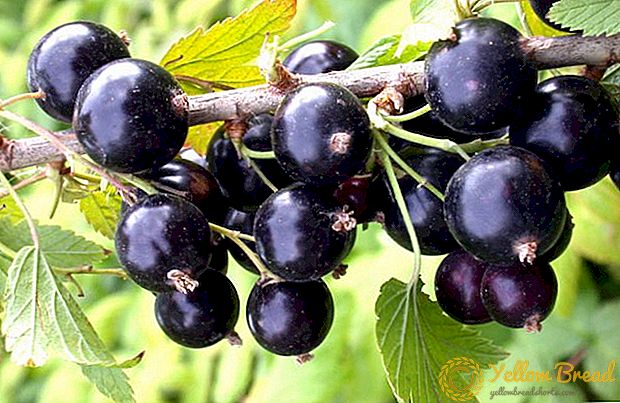 Grade currant "Yadrenaya" has a high winter hardiness (withstands temperatures below 30 degrees Celsius). Drought tolerance is medium. Loves a fertile soil and top dressing. Easily propagated by cuttings and layering.
Grade currant "Yadrenaya" has a high winter hardiness (withstands temperatures below 30 degrees Celsius). Drought tolerance is medium. Loves a fertile soil and top dressing. Easily propagated by cuttings and layering.Pros and cons varieties
Large variety of black currant "Yadrenaya" was originally derived as the "ideal" variety of currants. Much happened, as planned, but in recent years, serious disadvantages have also been added to indisputable advantages.
The advantages include the following:
- varietal variability - the first crop can be obtained already the next summer after planting the seedling;
- large-fruited (champions were fixed - berries weighing 9.2 g);
- resistance to temperature extremes;
- berries grow in tassels, like grapes. Their collection is simple, the berries are easily separated from the stem and are not deformed;
- Currant "Yadrenaya" has a dense skin on the berries, which facilitates crop transportability;
- Yield is above average.
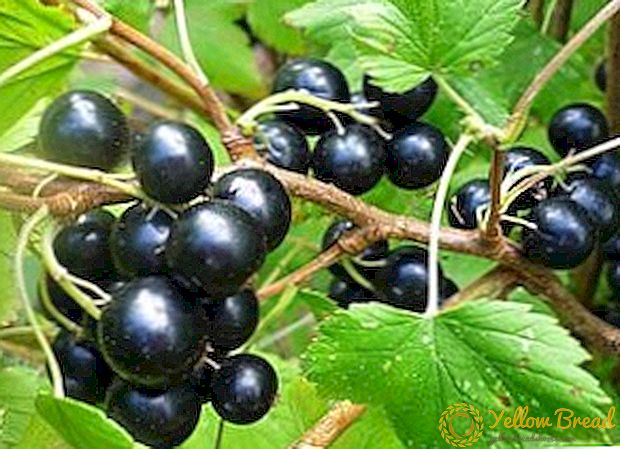
If we talk about cons, it is best to refer to the "parent" varieties L. Zabelin. She admits that in only the conditions of Siberia all the high qualities of the “Vigorous” variety really show up (these indicators, as a rule, sound in advertising catalogs). When growing this variety of currants in other regions, special care and care, constant feeding and pruning are required.
Maximum results are possible only under the most favorable conditions (even the Ukrainian black soil will not guarantee that the currant "Yadrenaya" will pick up the maximum weight of the berries, and the actual size of the fruit starts from 3.2 g).
Among other "unplanned" cons can be called:
- sour taste (not enough sweetness, so the best way to use is to grind currants of this variety with sugar);
- uneven ripening of berries in the brush;
- sagging shoots from the severity of the berries;
- not high vitamin content;
- insufficient resistance to diseases and pests - suffers from anthracnose, powdery mildew and kidney mite (in the middle lane);
- rapid aging and loss of yield (in the fourth or fifth year).
Proper planting currant varieties "Yadrenaya"
Care for currant "Yadrenaya" in the first place provides for the correct choice of seedlings, the area for planting and competent planting of seedlings in the ground.
How to choose seedlings for planting
To buy seedlings of the currant variety “Yadrenaya” should be only from manufacturers that you trust (in order not to lose money, time and effort).
When choosing a seedling should pay attention to:
- the seedling should be one to two years old (it is desirable that there are two or three small shoots without leaves. If there are leaves, they should still be cut off to reduce the evaporation of moisture);
- the presence of fibrous roots, no damage, rot or dried roots;
- the "root neck" should have several buds, incl. and on the thickest roots.
Another reliable option is self-preparation of seedlings (this will take a year). Currant "Vigorous" multiplies well from lignified cuttings: in September, strong one-, two- or three-year-old (thicker than a pencil) shoots of 20 cm are cut (the lower section should be under the bud).  Before planting cuttings for the night, they are soaked in a manure infusion (one part manure to six parts water). It is better to plant in the middle of September (spring planting of cuttings gives seedlings of inferior quality) in loose soil at an angle of 45 degrees, 1-2 buds should remain on the surface.
Before planting cuttings for the night, they are soaked in a manure infusion (one part manure to six parts water). It is better to plant in the middle of September (spring planting of cuttings gives seedlings of inferior quality) in loose soil at an angle of 45 degrees, 1-2 buds should remain on the surface.
In the spring, the cuttings should be fed with a solution of manure and urea (a tablespoon per bucket). There are three feedings (in mid-April, early and mid-May). If the summer is cold, you can feed in the middle of June. To fertilize with ashes the earth at the bases of saplings (a bucket on 3 sq. M). If aphids attack sprouts, treat leaves with a preparation against aphids (up to two teaspoons per 10 l).
It is necessary to water the cuttings regularly so that the earth does not dry out (until mid-August). It is possible to remove saplings after September 15 (previously it is necessary to water well not to tear off roots). Seedlings should ripen, gain a brownish color, remove dried leaves.
When is it better to plant currant seedlings
Currants varieties "Yadrenaya" planted in the fall and spring. As practice shows, it is best to plant black currants in mid-September (most professional gardeners recommend just that). The planting of seedlings in September takes place more organically and without stress for the plant - in autumn, ripe cuttings pass to the resting stage, adapt to frost, and begin spring growth in the spring with the start of sap flow.
Spring planting of seedlings with swollen buds will interrupt the physiological processes in the plant - the seedling will lose the strength to restore them, will begin to build up the green leaf to the detriment of the root system. 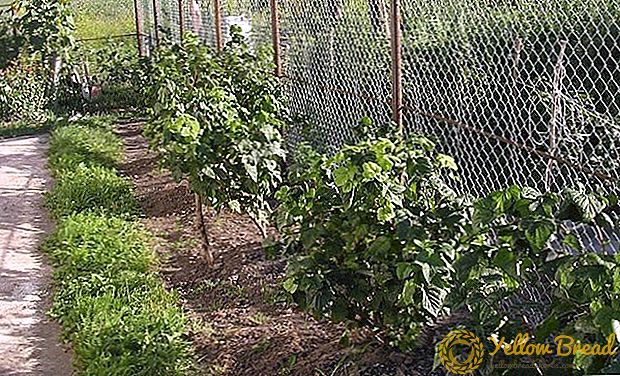
Selection and preparation of currant space
When choosing a site for planting currant "Yadrenoy", remember that the plant loves the sun and warmth, does not tolerate drafts. Light penumbra in the midday heat is acceptable. The currant root system does not tolerate wet lowlands and the close occurrence of groundwater (closer than 1 m).
In such cases, it is necessary to add additional soil (at least 0.5 m) or provide a landing pit with drainage (5-7 cm). The plot should be spacious. To ensure better yield, the distance between the bushes "Yadrenoy" should be at least 1.8 m.
Black currant will please a good harvest, provided that will be taken care of the soil. The most preferred soils are slightly acid light, loose and fertile. With insufficient soil fertility, it is advisable to prepare a special planting pit (0.5 mx 0.5 m). A pit is formed two weeks before planting from chernozem and 20 cm of the upper layer - from a fertile mixture (up to 15 liters of rotted manure, 100 g of phosphates, 35 g of nitrate or, alternatively, mineral fertilizers "Autumn", "AVA", "Nitrophoska") .
Step by Step Currant Planting Process
Before planting, it is necessary to prepare a sapling: 10-15 hours before planting, lower the roots into a weak manganese solution (you can use Topaz and Epin growth stimulants). 2-3 hours before planting, dip the roots in a “talker” of clay and infusion of manure, dry in the sun.
Planting process:
- pound the ground at the bottom of the landing pit, moisten it;
- on the mound put at an angle in 45 degrees prepared seedling, straighten the roots (so as not to be directed upwards). The deepening of the root collar should be no more than 5-7 cm;
- to fill the ground in the pit, pour with warm water (2-3 l) and condense;
- grumble near-stem circle (peat, straw).
- prune shoots (up to 5 cm hemp or 2-3 buds above the ground).
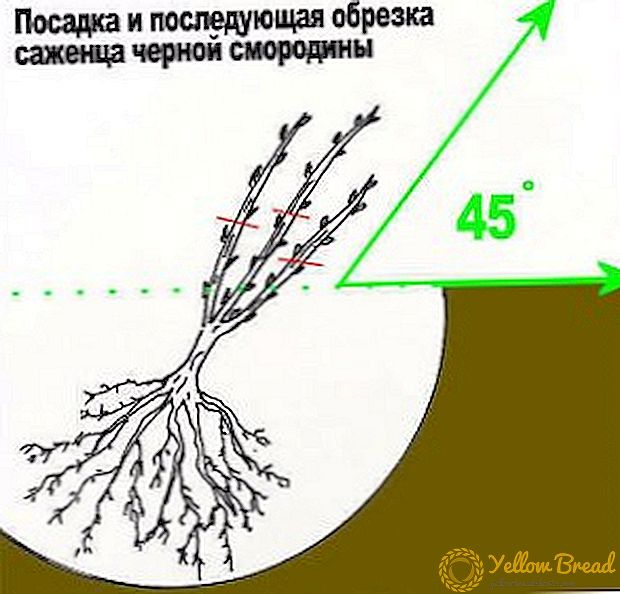
Competent care - a pledge of a rich harvest
Currant "Yadrenaya" capable of satisfying any demands of the gardener, provided that the cultivation of it happened competently, in compliance with the necessary rules.
Soil mulching
The first important rule that allows not only to provide itself with a good crop of currants, but generally save the plant, save it from drying out, is mulching the soil. Mulch from peat, straw, corn scraps, and others. The circle of the trunk (up to 1.5 m) helps preserve moisture (the ground remains soft), protects the currants from overheating by the scorching sun, and prevents the germination of weeds.
In winter, mulching insures (currant "Yadrenaya" comes from Siberia and its winter hardiness does not cause doubts) against freezing of the malic roots in case of early cold weather. 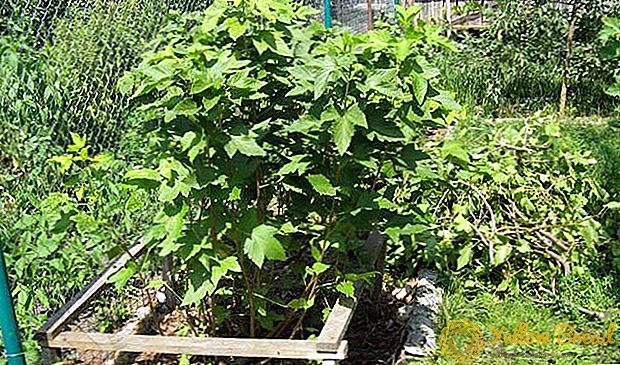
How to water
Currants need regular watering (especially during the ripening of berries) every two to three days, 12 liters per bush, early in the morning and after sunset. In the fall (September), they water for budding the next year. Under each bush - at least 70-80 liters of water. The best irrigation method for currants is sprinkling (lowers temperature, increases air humidity).
What to feed
Saplings can feed 3-4 times (solution of manure with urea). For a good harvest, you need to regularly feed currant "Yadrenaya" from the second year.
Early spring is the time of urea feeding (nitrogen-containing fertilizers). April-May - fertilize with nitroammofoskoy.During the summer (after flowering) - foliar top dressing ("Mikom", "Plantafol" or a mixture of potassium permanganate (10 g), boric acid (3 g) and copper sulphate (40 g)).
In the autumn (after harvest) - organic (humus, bird droppings), superphosphate, potassium chloride (dissolved in water or sprinkled). Once every four years it is advisable to liming the soil (up to 500 g of lime per square meter).
Harvesting
For the first time the harvest gives the bush in the second year after planting. The average harvest per bush is 4 kg. After reaching the age of five to six years, the yield decreases.
Harvesting currant varieties "Yadrenaya" is carried out in several stages (due to uneven ripening of berries). It is better to do on a dry day, after the gathering of morning dew. To collect use shallow containers (under the weight of the berries can crush each other).
Currant bed is low - it is desirable to process it in a short time. For transporting currant varieties "Yadrenaya" plucked with brushes, not breaking off the berries. In flat boxes should be no more than five kilograms of berries. 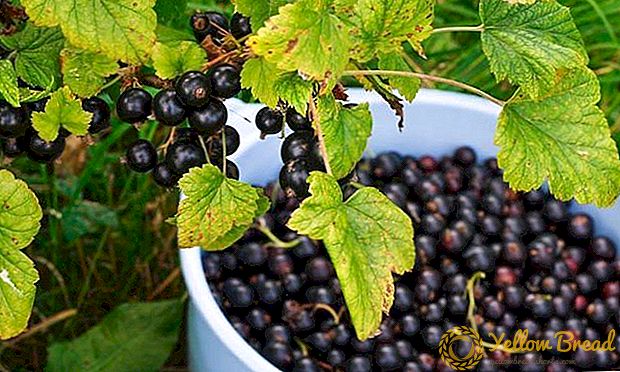
Skillful cropping
Currant "Vigorous" - mid-varietal variety, in which the height of the bush is regulated by pruning: the upper shoots can fall to the bottom. Regular pruning helps to rejuvenate the plant (up to 20% of shoots are removed during pruning) and to eliminate bush thickening. Each year, 2-4 new shoots are left (the total number of shoots should be 10-15). The best time for pruning is early spring (before the first leaves appear) and autumn (before frosts). All trimmed material is destroyed.
Resistance to diseases and pests: the fight in case of defeat
Currant "Yadrenaya" was not as resistant to disease as it was believed at first, the pests also do not disdain this variety.
Most often, currant "Vigorous" is subject to the following diseases:
- Anthracnose (brown spots on the leaves merge, first appear tubercles with spores, then holes) and septoria (transparent spots). How to fight: before flowering spray 2% solution of Bordeaux liquid. In the event of illness in the summer to process copper-containing drugs (copper sulfate, cuprozan, oleocuprite, etc.);
- Terry - leaves are modified to three-toed, flowers appear terry. Viral disease is not cured - to uproot and burn.
- Tuberculosis - the branches dry, covered with cracks. It should be treated Bordeaux liquid and "Home".
Powdery mildew and rust are less common. Of the pests most often goes to currants from aphids (for the prevention (before and after harvest) use "Aktellik").
If the aphid appeared when the berry has not yet been removed, it is better to use traditional methods of struggle, without chemistry (which will not harm the berries). You can spray bush anise oil (scare away ants), infusions of garlic, onions, wormwood, etc.


